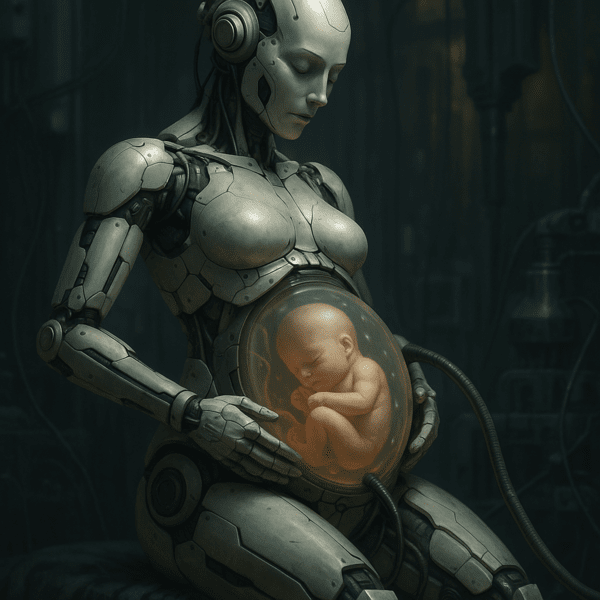What if AI could be pregnant for you?
Does that defeat the purpose of pregnancy?
Heyu,
Have you noticed how AI is showing up in places we never imagined it would?
Beyond search and design, it now finds itself in fertility clinics standing at the very beginning of human life.
It monitors embryos, selects viable eggs, and supports doctors in moments when they cannot be there.
And what if, one day, robots could carry and deliver babies? (In a year, perhaps, it may no longer be just a ‘what if.’)
Recently, a Chinese robotics company announced plans to create a humanoid robot equipped with an artificial womb capable of sustaining pregnancy and birth within a year. Dr. Zhang Zipeng from Nanyang Technological University in Singapore, leading the project, explained that the goal is to “address declining populations and support young people who want children but not pregnancy.”
Previous attempts at artificial wombs resembled incubators, supporting premature babies in controlled environments. What makes this vision different is its ambition: to enable the full cycle from conception to delivery inside a robot. The feasibility remains uncertain, but the ethical implications are undeniable.
If such a robot were ever to become real, would it help boost birth rates or would it redefine, and perhaps even distort, what it means to bring life into the world?
1. From procedure to patient experience
For decades, infertility treatment was defined only by clinical outcomes.
Success rates mattered more than patient experience.
AI changes that balance.
By embedding into incubators and lab equipment, it automates repetitive monitoring tasks, allowing doctors to spend more time with patients.
Treatment begins to shift from being a procedure to becoming a designed Patient Experience, where the sense of care is itself part of the outcome.
2. Data as a new layer of reassurance
Uncertainty is the hardest part of infertility.
Will the embryo grow?
Will implantation succeed?
Even doctors cannot provide definite answers.
AI doesn’t decide, it observes.
It records embryo development continuously and alerts medical staff if anomalies appear. By covering the hours humans cannot, AI provides patients with a subtle but powerful reassurance: “my embryo is being cared for.”Data is no longer just numbers. It becomes a psychological safety net.
3. Building emotional value in invisible moments
Infertility treatment offers few visible milestones. Mostly, it’s waiting and worrying. AI adds value in these invisible stretches of time. Monitoring embryos continuously, it creates a sense of presence even when patients are unaware. Unseen care becomes trust. Invisible support itself turns into emotional equity.
4. Extending the doctor – patient bond
Doctors want to spend more time with patients, but reality limits them: too many cases, too little time. AI bridges that gap. By automating technical observation, it frees doctors to focus on empathy and conversation.
Patients, in turn, experience not only medical treatment but the feeling of companionship on a journey.
AI doesn’t replace trust, it scaffolds it.
5. Technology as an ethical mirror
But as technology enters the origins of life, new questions emerge.
How far should human desire be supported? AI may help couples achieve pregnancy, but it can also amplify expectations beyond natural limits.
The concept of a “pregnancy robot” in China makes this even more urgent - forcing society to confront what parenthood, reproduction, and ethics mean in an age of technological intervention. AI is no longer just a medical tool. It is a mirror reflecting social values, ambitions, and boundaries.
6. Assisted Humanity
Consumers today expect brands to deliver experiences, not just products, patients now expect medicine to deliver emotional care, not just efficiency.
AI in fertility is part of this shift. It is not only a system of optimization, but a partner in safeguarding what humans long for most: the possibility of life.
The Bigger Picture
In the end, AI in fertility treatment is not about replacing humans.
It is about reducing the uncertainties humans cannot manage.
Yet the reassurance it offers comes with responsibility: to define the ethical and social boundaries of how far technology should reach into the origins of life.



